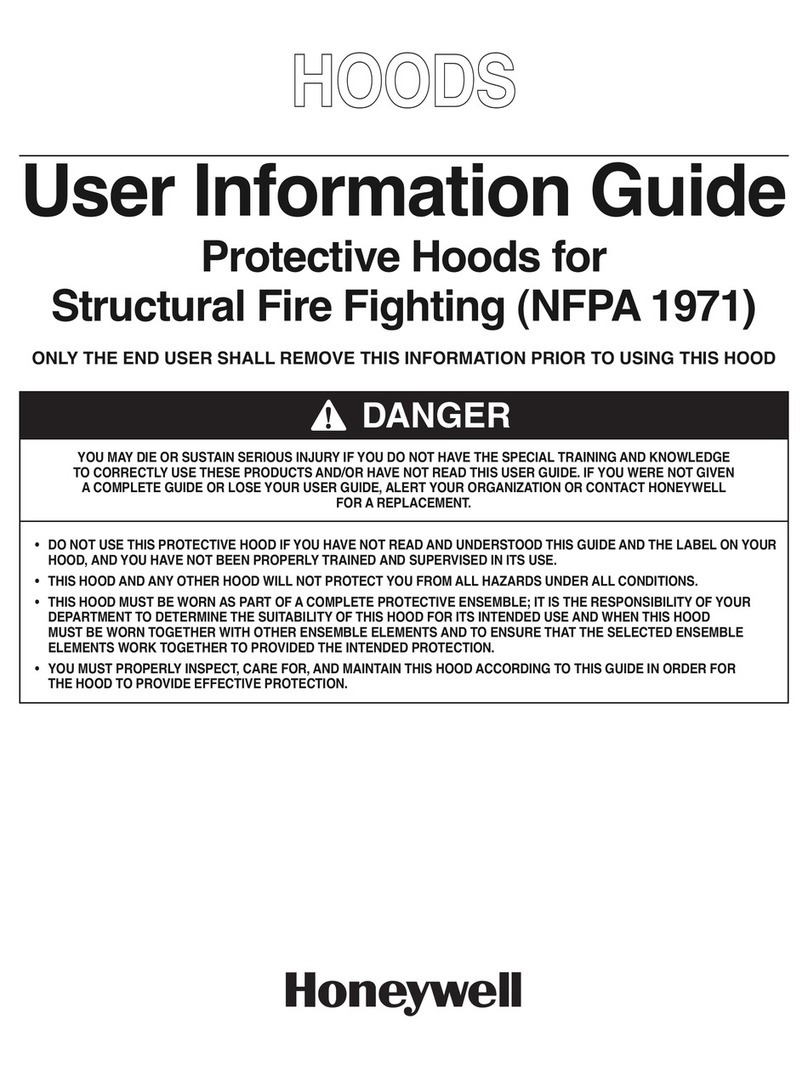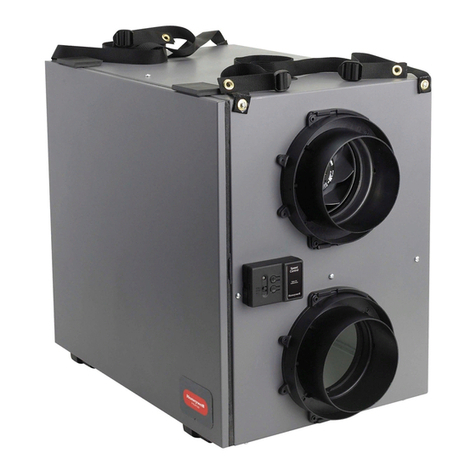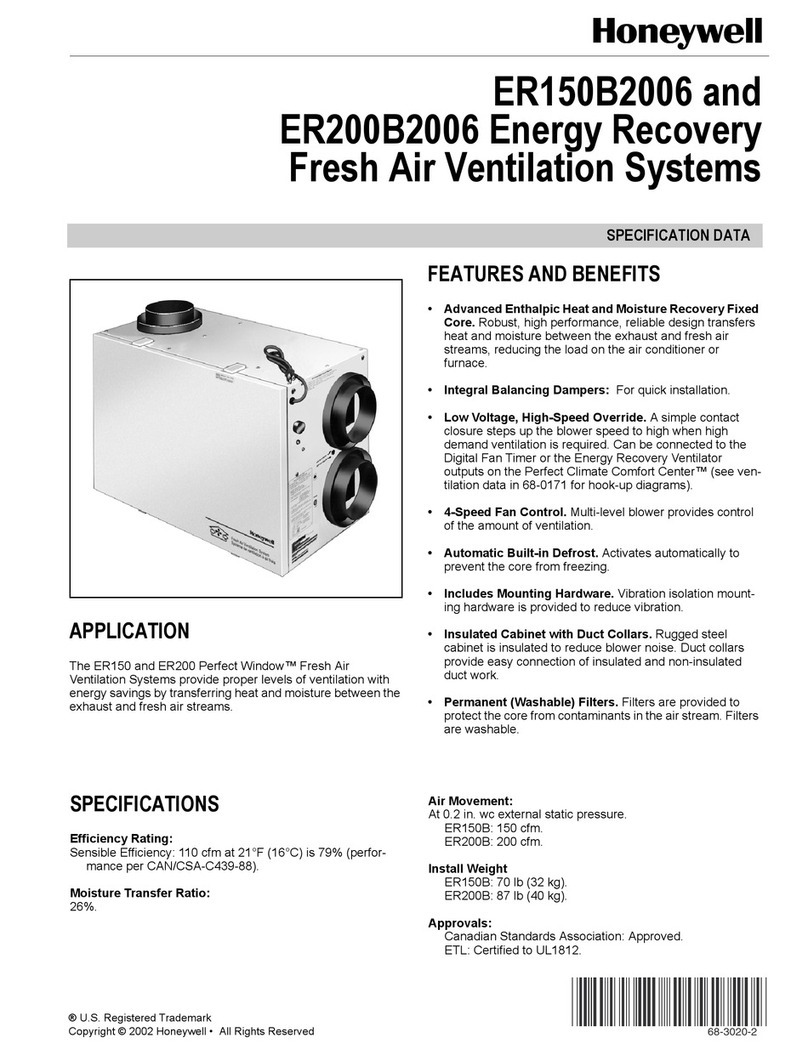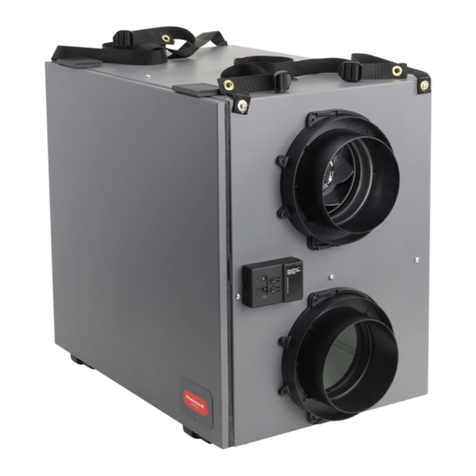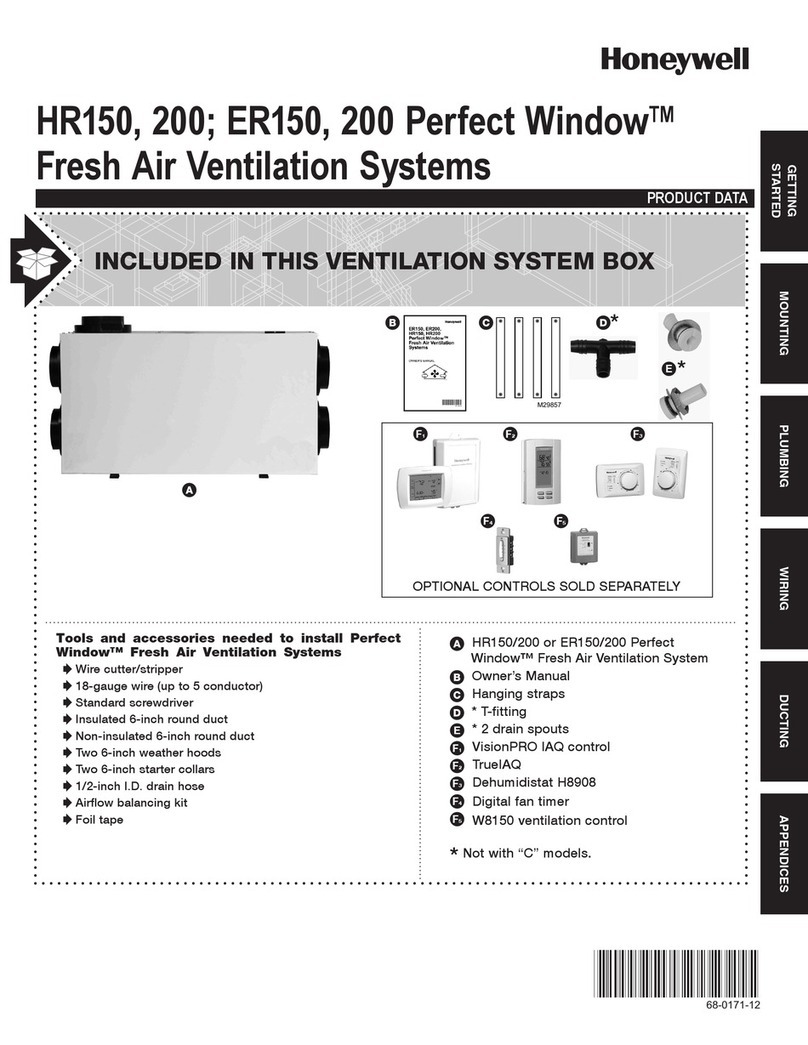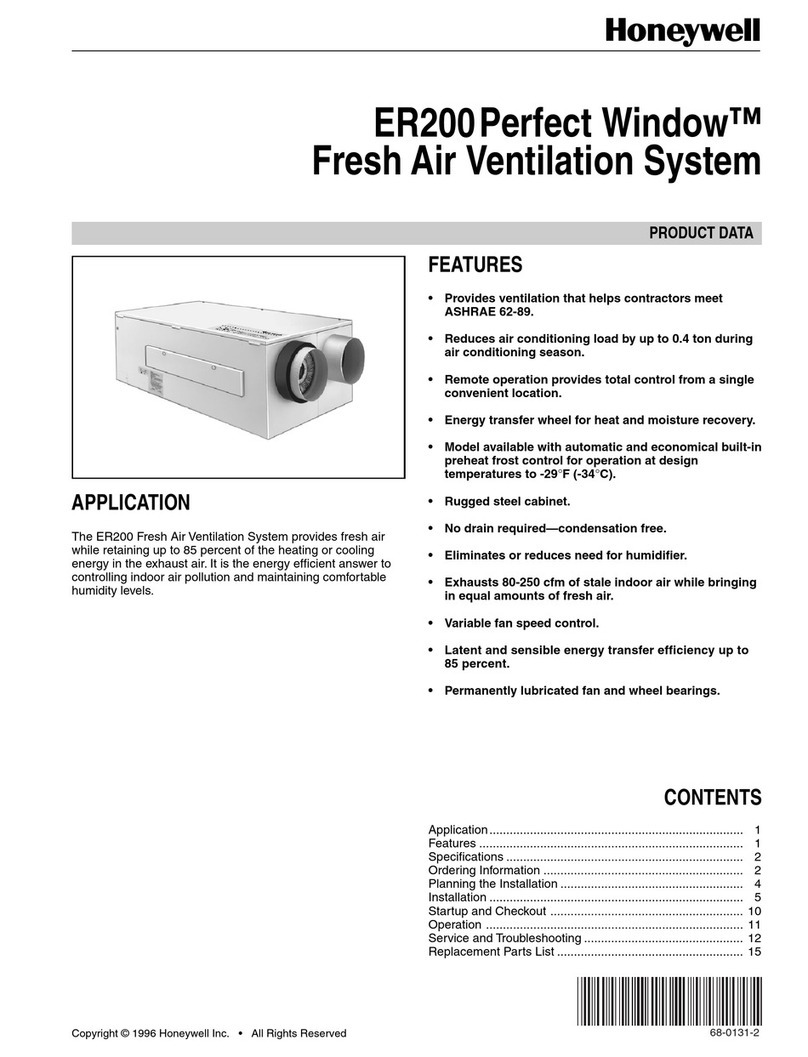
EN-2
2.2. COMPACT AIR ASSEMBLY AND FILTER/CARTRIDGE (PAPR ONLY)
2.2.1. The Compact Air series assembly includes a blower that holds a set of three filters/cartridges, a battery, a straight breathing
tube to connect to the PRIMAIR headgear, a fabric cover for the breathing tube, an air flow indicator, and a carrying case.
2.2.2. Filters, cartridges and filter/cartridge combinations come in sets of three and include Particulate filters, gas filters and
combination filters.
3. PRE-USE INSTRUCTIONS
Visually check the HONEYWELL PRIMAIR PLUS assembly to make certain that all components are in place and in good working
condition. The PRIMAIR components consist of a headgear and loose fitting facepiece, the PRIMAIR PLUS consists of a bibbed hood
or hood with neck seal, and one set of peel-away lenses. The PRIMAIR PLUS Series is shipped from the factory with the head cover
(loose fitting facepiece or hood) preassembled on the headgear.
The respirator includes blower/battery assembly and filter/cartridges (PAPR). Do not use this respirator
unless all of the required components are attached. See the end of the User Instructions for the Honeywell
Compact Air PAPR for a list of approved components, or check with your safety manager or industrial
hygienist, or with Honeywell Respiratory Safety Products Customer Service.
3.1. ADJUSTING THE HEADGEAR
You will need to remove the head cover to make all three adjustments noted below. Refer to Section “5.2. REMOVING THE HEAD
COVER FROM HEADGEAR”.
The PRIMAIR headgear has three adjustments to maximize comfort and fit. Adjust the headgear to the proper size by following the
steps noted below. Adjustment A is the primary adjustment and need not be readjusted after a comfortable and secure fit is achieved.
Adjustment B sets the height of the headgear on your head, and may be adjusted more frequently if desired. Adjustment C is the
ratchet that sets the circumference of the headgear to your head, and will be adjusted each time you put the PRIMAIR PLUS
headgear on.
1) Adjustment A: The primary adjustment is preset to a “medium” size. To readjust to a smaller or larger size, slip your finger
under the top lateral strap located towards the back of the headgear, unsnapping it from the yellow locking pin (Figure 1).
Repeat this procedure with the lower lateral strap. Move the lower strap so the desired hole (small, medium or large) is aligned
with the yellow locking pin and snap the strap back onto the pin. Move the top strap so the desired hole is over the yellow pin
and snap into place (Figure 2). Ensure that the ends of the lateral straps are under the yellow air duct attachment.
2) Adjustment B: To set the height of the headgear on your head, squeeze the two tabs on the centre lateral strap with your
thumb and forefinger, releasing the locking mechanism, and pull each side of the centre strap to widen the strap. Place the
headgear on your head. Squeeze the centre tabs again to release the locking mechanism, and push or pull each side of the
centre strap to shorten or lengthen the strap. Adjust until the headgear is comfortable and at the desired height on your head
(Figure 3).
3) Adjustment C: Turn the ratchet clockwise to tighten the headgear so that you have a snug and comfortable fit (Figure 4).
Readjustments of the centre lateral strap (Adjustment B) and the ratchet (Adjustment C) can be made at this time for the most
comfortable and secure fit. If you are unable to achieve a snug and comfortable fit, readjust the back lateral straps to a smaller
or larger size. Repeat steps 2 and 3.
3.2. ASSEMBLING THE HEAD COVER ON THE HEADGEAR
1) Slip the head cover over the headgear, so the two openings of the head cover line up with the ratchet and manifold orifice.
2) Pull the yellow end of the manifold orifice through the upper hole of the head cover, making sure the yellow connector is
completely through the hole.
3) Pull the ratchet through the lower hole, so that the ratchet is easily accessible, and the elastic strap is under the ratchet wheel
(Figure 5).
4) Snap the head cover onto the male snaps on the headgear. The PA111 and PA121 have two (2) female snaps. For the
PRIMAIR PLUS, snap the female snaps to the male snaps that are closest to the front of the headgear (Furthest away from the
ratchet adjustment at back).
5) Pull the bottom of the lens on the head cover down, so the headgear manifold is completely under the fabric portion of the head
cover. Make sure that the fabric on the inside of the PRIMAIR PLUS does not block the opening of the manifold (Figure 6).
6) Remove the protective plastic covers (inside and outside) on the lens of the head cover before using the respirator.
7) The bib length of the PRIMAIR PLUS head cover may be adjusted by using the two sets of snaps on the inside of the bib front.
This adjustment may be done now or at any point while using this respirator (Figure 7).
4. PRE ENTRY PROCEDURES
4.1. INSPECTION
Each and every time you put on your respirator you must inspect all components.
1) Refer to the Instruction User Manual of the Compact Air series PAPR for inspection procedures of those components
2) Inspect the hood and headgear for wear or damage.
a) Check the hood for tears or holes.
b) Check the headgear for any cracks or other damage.
c) Check the fitting on the breathing tube.
d) Check that head cover snaps are attached to the headgear.
e) Ensure that the headgear is adjusted properly to fit your head.
